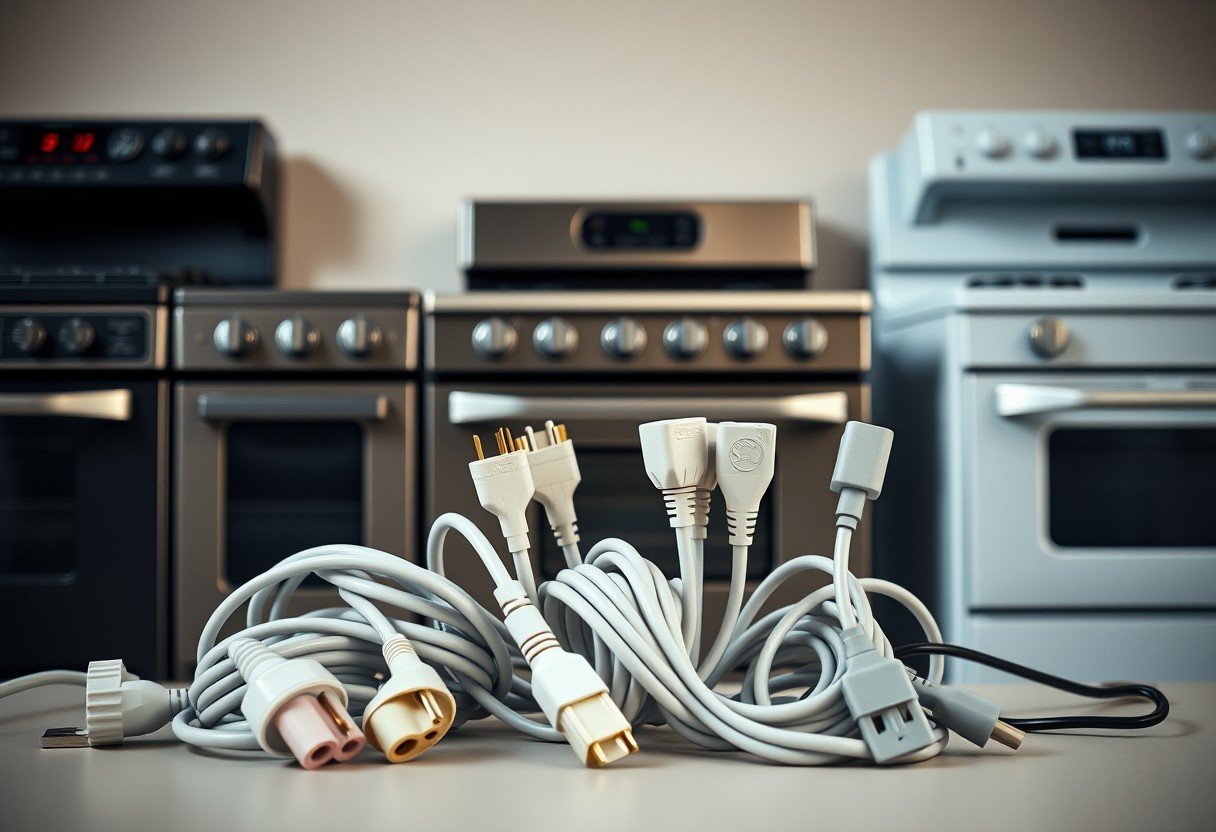Omelets can be a delightful and nutritious meal when prepared with care, especially when it comes to handling eggs. As you initiate on your omelet-making journey, it’s necessary to prioritize safety to prevent foodborne illnesses. From selecting fresh eggs at the store to proper storage and cooking techniques, understanding how to handle eggs effectively is crucial. This guide will equip you with the knowledge you need to ensure your omelet is not only delicious but also safe for you and your family to enjoy.
Key Takeaways:
- Proper Storage: Always store eggs in the refrigerator to maintain their freshness and prevent bacterial growth.
- Safe Handling: Wash hands, utensils, and surfaces before and after handling raw eggs to avoid cross-contamination.
- Cook Thoroughly: Ensure eggs are cooked to a safe internal temperature of 160°F (71°C) to kill harmful bacteria such as Salmonella.
- Use Fresh Eggs: Check for freshness by inspecting expiration dates and performing the float test; fresh eggs sink while older eggs float.
- Regular Cleaning: Clean and sanitize all cooking appliances and surfaces that come into contact with eggs to reduce food safety risks.
Understanding Eggs
For anyone looking to create the perfect omelet, understanding the role of eggs is vital. Eggs are not only a primary ingredient but also a source of protein, vitamins, and minerals. Recognizing how to select and handle them safely can significantly enhance your cooking experience and ensure food safety.
Types of Eggs and Their Safety
For your omelet endeavors, it’s crucial to be familiar with the various types of eggs available. Each type has different safety considerations as outlined in the table below:
| Type of Egg | Safety Considerations |
|---|---|
| Chicken Eggs | Check for cracks; refrigerate immediately. |
| Duck Eggs | Higher risk of Salmonella; cook thoroughly. |
| Quail Eggs | Smaller, but treat them like chicken eggs. |
| Organic Eggs | Better conditions, but still need precautions. |
| Pasteurized Eggs | Safer for raw dishes; use as needed. |
This understanding of egg types will empower you to make safer choices in the kitchen.
Nutritional Benefits of Eggs
For your health-conscious cooking, eggs offer numerous nutritional advantages. They are rich in protein, vital amino acids, vitamins A, D, E, and B12, as well as minerals such as selenium and choline.
To maximize the health benefits of eggs in your omelets, consider incorporating a variety of vegetables or herbs. This not only enhances flavor but also increases the nutrient density of your meal, ensuring you get a balanced intake of nutrients vital for maintaining energy and health.
Purchasing and Storing Eggs
You should always prioritize safety and quality when purchasing and storing eggs. Start by selecting eggs from reputable sources, whether they are from local farms or grocery stores. Look for eggs with intact shells, free of cracks or leaks. Once purchased, it is imperative to store them correctly to maintain freshness and minimize the risk of foodborne illness.
Choosing Fresh Eggs
On your journey to making delicious omelets, choosing fresh eggs is crucial. When shopping, check the sell-by or expiration dates on the carton, and opt for eggs that are as fresh as possible. Fresh eggs usually have a firmer texture and a more vibrant yolk color, which not only indicates better quality but also enhances the flavor of your omelet.
Proper Storage Techniques
Proper egg storage is key to maintaining their quality and safety. Keep your eggs in the original carton to protect them from absorbing odors and flavors from other foods in your refrigerator. Store them in the coldest part of your fridge, ideally between 33°F and 40°F. This temperature range helps to slow down spoilage and keeps your eggs fresh for a longer period.
Understanding the importance of proper storage techniques can greatly extend the lifespan of your eggs. Additionally, it’s best to keep your eggs upright in their carton to prevent the yolk from bursting and to preserve their quality. Be mindful not to leave eggs out at room temperature for extended periods, as this can encourage bacteria growth. Regularly check your eggs for any unusual smells or appearances before using them, ensuring a safe and tasty omelet experience.
Handling Eggs Safely
Now that you’re ready to create the perfect omelet, it’s vital to focus on safe egg handling. Always start by ensuring that your hands, utensils, and surfaces are clean. Store eggs in the refrigerator to maintain their freshness and reduce the risk of bacterial contamination. Bear in mind, the way you handle eggs can significantly influence your health and the quality of your meal, so don’t overlook these safety measures.
Washing vs. Not Washing
On the topic of washing eggs, it’s important to know that you should generally avoid washing them before use. Commercial eggs are typically washed and sanitized, so they come to you clean. Washing eggs at home can remove the protective coating, making them more susceptible to bacteria. Instead, focus on proper cooking techniques to ensure safety.
Avoiding Cross-Contamination
Avoiding cross-contamination is vital when it comes to food safety. Always use separate cutting boards, utensils, and plates for raw eggs and other foods. After handling eggs, make sure to wash your hands and any surfaces that came into contact with them. This practice not only ensures that harmful bacteria are contained but also helps you maintain a clean cooking environment.
Understanding the significance of avoiding cross-contamination can help you protect your health and enjoy your omelet worry-free. Raw eggs can harbor Salmonella, a harmful bacteria that can cause foodborne illness. By keeping raw eggs separate from other ingredients and practicing proper hygiene, you significantly reduce your risk of exposure to such pathogens. Always prioritize safety in your kitchen to create delicious and safe meals.
Cooking Eggs Properly
After cracking open your eggs, it’s necessary to cook them properly to ensure food safety and maximize flavor. Eggs should be cooked until both the yolk and white are firm, which reduces the risk of foodborne illness and provides a delicious, safe omelet. Pay close attention to cooking times and temperatures to achieve that delicate, fluffy texture while eliminating any pathogens.
Safe Cooking Temperatures
An effective way to safeguard against salmonella is to be aware of safe cooking temperatures. Below is a table highlighting the ideal conditions for egg preparation:
Safe Cooking Temperatures
| Type of Egg Preparation | Safe Cooking Temperature (°F) |
|---|---|
| Fried Eggs | 160°F |
| Scrambled Eggs | 160°F |
| Omelets | 160°F |
| Poached Eggs | 160°F |
Techniques for Omelet Preparation
Eggs offer a wonderful canvas for creating a tasty omelet, and employing the right techniques can enhance your cooking experience. Start by whisking your eggs thoroughly, ensuring even mixing and aeration, which leads to a fluffier texture. Use a non-stick skillet over moderate heat, adding just a bit of oil or butter to prevent sticking. When pouring in your eggs, act quickly to spread them evenly across the pan, allowing all parts to cook uniformly.
Techniques for making a perfect omelet include timing, temperature control, and layering flavors. Once your eggs hit the pan, gently swirl to keep the cooking even. As the edges begin to set, you can add your desired fillings—cheese, herbs, vegetables, or meats—before folding the omelet in half or rolling it. By practicing these techniques, you’ll master omelet preparation, achieving delightful results that are both delicious and safe to enjoy.
Common Myths About Eggs
Keep in mind that many myths about eggs can lead to unnecessary fears and confusion. For instance, some believe that eggs should never be refrigerated, while others think that organic eggs are completely free from salmonella. Understanding the facts behind these myths helps ensure you handle eggs safely and confidently in your kitchen.
Refrigeration Misconceptions
The reality is that eggs should always be refrigerated to minimize the risk of bacterial growth. In many countries, eggs are washed and then refrigerated, which significantly lowers the chances of contamination. However, in some regions, eggs may be sold unrefrigerated, leading to confusion. Regardless of your location, it’s best to store your eggs in the fridge to ensure their safety.
Salmonella Risk Explained
The perception that all eggs carry a high risk of salmonella is misleading. While the bacteria can be present, the actual likelihood of encountering salmonella in your eggs is relatively low, especially if you purchase eggs from reputable sources. Proper handling and cooking of eggs significantly reduce the risk of illness.
Plus, using proper cooking techniques, such as ensuring that eggs are cooked to an internal temperature of 160°F, can further decrease the chances of salmonella. Additionally, avoiding the consumption of raw or undercooked eggs is a precaution you should take to protect yourself and your loved ones. Familiarizing yourself with safe egg practices allows you to enjoy omelets and other egg dishes without unnecessary worry.

Serving and Leftover Safety
Once again, your attention to food safety is crucial when serving and storing omelets. To ensure that you prevent foodborne illnesses, serve omelets immediately after cooking, and be mindful of any leftovers. Proper handling and storage of cooked eggs contribute to maintaining their quality and safety for your enjoyment.
Serving Omelets Immediately
On serving your omelet right after cooking, you not only enhance its flavor and texture but also minimize the risk of bacterial growth. Ensuring that your omelet is hot and fresh will provide the best dining experience while keeping your food safe to eat.
Storing Leftovers Correctly
With proper storage techniques, you can safely enjoy any omelet leftovers. After they’ve cooled for no more than two hours, promptly store them in an airtight container in the refrigerator, ideally at a temperature below 40°F. This minimizes the growth of harmful bacteria and preserves their quality for later consumption.
This practice is crucial, as leftover omelets should be consumed within three to four days to guarantee freshness and safety. When reheating, ensure that your omelet reaches an internal temperature of 165°F, as this temperature kills off any bacteria that may have developed during storage. By following these guidelines, you can safely savor your omelets without compromising your health.
To wrap up
From above, it is clear that handling eggs safely is crucial for preparing delicious omelets while maintaining your health. Always start by washing your hands and ensuring that your cooking surfaces and utensils are clean. Store your eggs at the proper temperature, and inspect them for any cracks before use. When cooking, be sure to cook your omelets thoroughly, reaching at least 160°F to kill any harmful bacteria. By following these guidelines, you can confidently create mouthwatering omelets without compromising on food safety.
FAQ
Q: How should I store eggs to ensure they are safe for making omelets?
A: To keep eggs safe, store them in the refrigerator at a temperature below 40°F (4°C). Keep them in their original carton to protect them from absorbing strong odors and flavors from other foods. It’s also advisable to place them on a shelf rather than the door, as the temperature fluctuates more in door compartments.
Q: What is the proper way to check if eggs are fresh before using them?
A: A simple way to check the freshness of eggs is to perform the float test. Fill a bowl with water and gently place the egg in it. Fresh eggs will sink and lie flat on the bottom, while older eggs will stand upright or float, indicating they should not be used.
Q: How should I handle eggs to minimize the risk of foodborne illness when making omelets?
A: Always wash your hands, utensils, and surfaces thoroughly before and after handling eggs. Use clean, dry tools when cracking eggs and avoid leaving them at room temperature for an extended period. If you’re using raw eggs, consider using pasteurized eggs to reduce the risk of Salmonella contamination.
Q: Is it safe to consume omelets made with cracked or dirty eggs?
A: No, it is not safe to consume omelets made with cracked or dirty eggs. Cracked eggs may allow bacteria to enter, and dirty eggs can carry pathogens on their shells. Always inspect your eggs and discard any that are damaged or unclean.
Q: What is the recommended cooking temperature for eggs to ensure they are safe to eat?
A: Eggs should be cooked until both the white and the yolk are firm, reaching a minimum internal temperature of 160°F (71°C). This ensures that any harmful bacteria are killed, making the omelet safe to consume. Use a food thermometer for accuracy if needed.








Leave a Comment